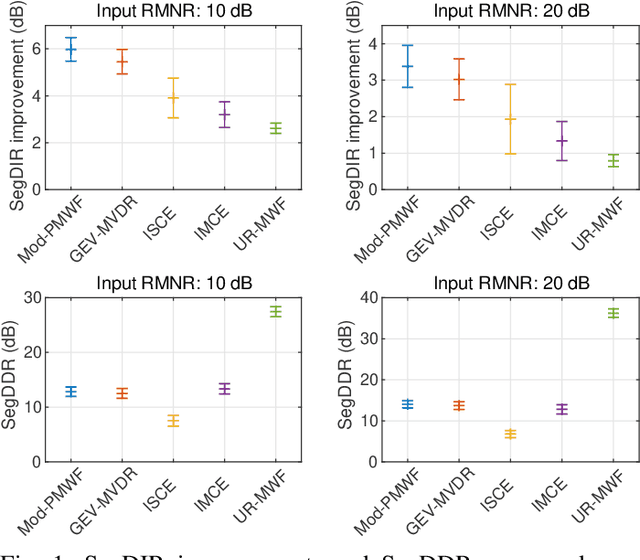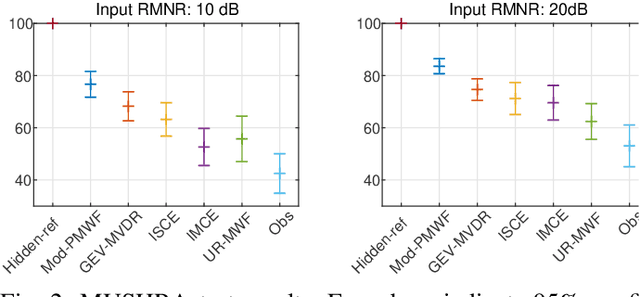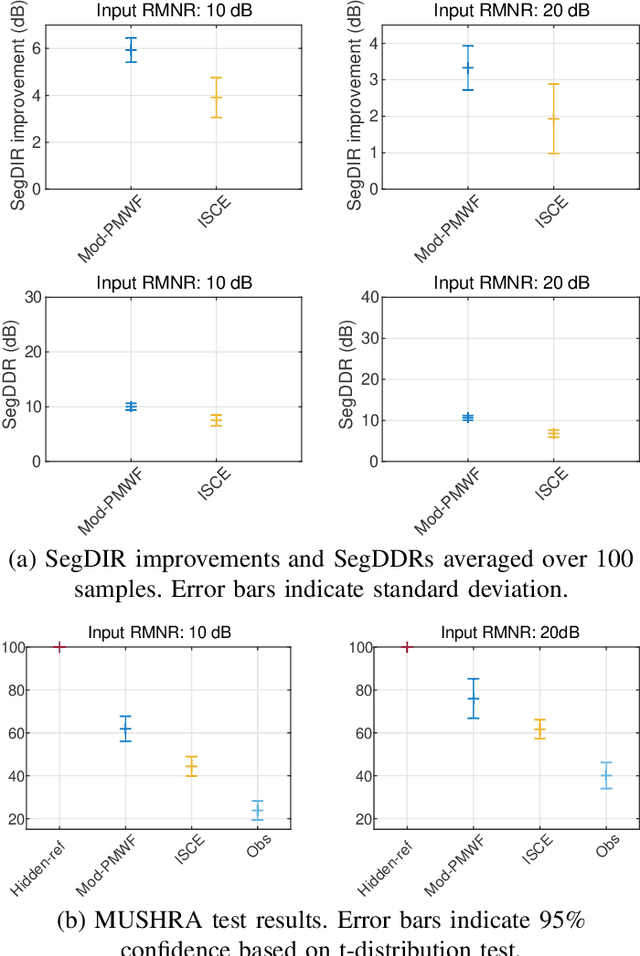Ning Guo
MAST-Pro: Dynamic Mixture-of-Experts for Adaptive Segmentation of Pan-Tumors with Knowledge-Driven Prompts
Mar 18, 2025Abstract:Accurate tumor segmentation is crucial for cancer diagnosis and treatment. While foundation models have advanced general-purpose segmentation, existing methods still struggle with: (1) limited incorporation of medical priors, (2) imbalance between generic and tumor-specific features, and (3) high computational costs for clinical adaptation. To address these challenges, we propose MAST-Pro (Mixture-of-experts for Adaptive Segmentation of pan-Tumors with knowledge-driven Prompts), a novel framework that integrates dynamic Mixture-of-Experts (D-MoE) and knowledge-driven prompts for pan-tumor segmentation. Specifically, text and anatomical prompts provide domain-specific priors, guiding tumor representation learning, while D-MoE dynamically selects experts to balance generic and tumor-specific feature learning, improving segmentation accuracy across diverse tumor types. To enhance efficiency, we employ Parameter-Efficient Fine-Tuning (PEFT), optimizing MAST-Pro with significantly reduced computational overhead. Experiments on multi-anatomical tumor datasets demonstrate that MAST-Pro outperforms state-of-the-art approaches, achieving up to a 5.20% improvement in average DSC while reducing trainable parameters by 91.04%, without compromising accuracy.
Developing a PET/CT Foundation Model for Cross-Modal Anatomical and Functional Imaging
Mar 04, 2025Abstract:In oncology, Positron Emission Tomography-Computed Tomography (PET/CT) is widely used in cancer diagnosis, staging, and treatment monitoring, as it combines anatomical details from CT with functional metabolic activity and molecular marker expression information from PET. However, existing artificial intelligence-driven PET/CT analyses rely predominantly on task-specific models trained from scratch or on limited datasets, limiting their generalizability and robustness. To address this, we propose a foundation model approach specifically designed for multimodal PET/CT imaging. We introduce the Cross-Fraternal Twin Masked Autoencoder (FratMAE), a novel framework that effectively integrates whole-body anatomical and functional or molecular information. FratMAE employs separate Vision Transformer (ViT) encoders for PET and CT scans, along with cross-attention decoders that enable synergistic interactions between modalities during masked autoencoder training. Additionally, it incorporates textual metadata to enhance PET representation learning. By pre-training on PET/CT datasets, FratMAE captures intricate cross-modal relationships and global uptake patterns, achieving superior performance on downstream tasks and demonstrating its potential as a generalizable foundation model.
On Flange-based 3D Hand-Eye Calibration for Soft Robotic Tactile Welding
Jul 27, 2024



Abstract:This paper investigates the direct application of standardized designs on the robot for conducting robot hand-eye calibration by employing 3D scanners with collaborative robots. The well-established geometric features of the robot flange are exploited by directly capturing its point cloud data. In particular, an iterative method is proposed to facilitate point cloud processing toward a refined calibration outcome. Several extensive experiments are conducted over a range of collaborative robots, including Universal Robots UR5 & UR10 e-series, Franka Emika, and AUBO i5 using an industrial-grade 3D scanner Photoneo Phoxi S & M and a commercial-grade 3D scanner Microsoft Azure Kinect DK. Experimental results show that translational and rotational errors converge efficiently to less than 0.28 mm and 0.25 degrees, respectively, achieving a hand-eye calibration accuracy as high as the camera's resolution, probing the hardware limit. A welding seam tracking system is presented, combining the flange-based calibration method with soft tactile sensing. The experiment results show that the system enables the robot to adjust its motion in real-time, ensuring consistent weld quality and paving the way for more efficient and adaptable manufacturing processes.
DSFNet: Learning Disentangled Scenario Factorization for Multi-Scenario Route Ranking
Mar 30, 2024Abstract:Multi-scenario route ranking (MSRR) is crucial in many industrial mapping systems. However, the industrial community mainly adopts interactive interfaces to encourage users to select pre-defined scenarios, which may hinder the downstream ranking performance. In addition, in the academic community, the multi-scenario ranking works only come from other fields, and there are no works specifically focusing on route data due to lacking a publicly available MSRR dataset. Moreover, all the existing multi-scenario works still fail to address the three specific challenges of MSRR simultaneously, i.e. explosion of scenario number, high entanglement, and high-capacity demand. Different from the prior, to address MSRR, our key idea is to factorize the complicated scenario in route ranking into several disentangled factor scenario patterns. Accordingly, we propose a novel method, Disentangled Scenario Factorization Network (DSFNet), which flexibly composes scenario-dependent parameters based on a high-capacity multi-factor-scenario-branch structure. Then, a novel regularization is proposed to induce the disentanglement of factor scenarios. Furthermore, two extra novel techniques, i.e. scenario-aware batch normalization and scenario-aware feature filtering, are developed to improve the network awareness of scenario representation. Additionally, to facilitate MSRR research in the academic community, we propose MSDR, the first large-scale publicly available annotated industrial Multi-Scenario Driving Route dataset. Comprehensive experimental results demonstrate the superiority of our DSFNet, which has been successfully deployed in AMap to serve the major online traffic.
Adaptive trajectory-constrained exploration strategy for deep reinforcement learning
Dec 27, 2023Abstract:Deep reinforcement learning (DRL) faces significant challenges in addressing the hard-exploration problems in tasks with sparse or deceptive rewards and large state spaces. These challenges severely limit the practical application of DRL. Most previous exploration methods relied on complex architectures to estimate state novelty or introduced sensitive hyperparameters, resulting in instability. To mitigate these issues, we propose an efficient adaptive trajectory-constrained exploration strategy for DRL. The proposed method guides the policy of the agent away from suboptimal solutions by leveraging incomplete offline demonstrations as references. This approach gradually expands the exploration scope of the agent and strives for optimality in a constrained optimization manner. Additionally, we introduce a novel policy-gradient-based optimization algorithm that utilizes adaptively clipped trajectory-distance rewards for both single- and multi-agent reinforcement learning. We provide a theoretical analysis of our method, including a deduction of the worst-case approximation error bounds, highlighting the validity of our approach for enhancing exploration. To evaluate the effectiveness of the proposed method, we conducted experiments on two large 2D grid world mazes and several MuJoCo tasks. The extensive experimental results demonstrate the significant advantages of our method in achieving temporally extended exploration and avoiding myopic and suboptimal behaviors in both single- and multi-agent settings. Notably, the specific metrics and quantifiable results further support these findings. The code used in the study is available at \url{https://github.com/buaawgj/TACE}.
* 35 pages, 36 figures; accepted by Knowledge-Based Systems, not published
Proprioceptive State Estimation for Amphibious Tactile Sensing
Dec 15, 2023



Abstract:This paper presents a novel vision-based proprioception approach for a soft robotic finger capable of estimating and reconstructing tactile interactions in terrestrial and aquatic environments. The key to this system lies in the finger's unique metamaterial structure, which facilitates omni-directional passive adaptation during grasping, protecting delicate objects across diverse scenarios. A compact in-finger camera captures high-framerate images of the finger's deformation during contact, extracting crucial tactile data in real time. We present a method of the volumetric discretized model of the soft finger and use the geometry constraints captured by the camera to find the optimal estimation of the deformed shape. The approach is benchmarked with a motion-tracking system with sparse markers and a haptic device with dense measurements. Both results show state-of-the-art accuracies, with a median error of 1.96 mm for overall body deformation, corresponding to 2.1$\%$ of the finger's length. More importantly, the state estimation is robust in both on-land and underwater environments as we demonstrate its usage for underwater object shape sensing. This combination of passive adaptation and real-time tactile sensing paves the way for amphibious robotic grasping applications.
Autoencoding a Soft Touch to Learn Grasping from On-land to Underwater
Aug 16, 2023Abstract:Robots play a critical role as the physical agent of human operators in exploring the ocean. However, it remains challenging to grasp objects reliably while fully submerging under a highly pressurized aquatic environment with little visible light, mainly due to the fluidic interference on the tactile mechanics between the finger and object surfaces. This study investigates the transferability of grasping knowledge from on-land to underwater via a vision-based soft robotic finger that learns 6D forces and torques (FT) using a Supervised Variational Autoencoder (SVAE). A high-framerate camera captures the whole-body deformations while a soft robotic finger interacts with physical objects on-land and underwater. Results show that the trained SVAE model learned a series of latent representations of the soft mechanics transferrable from land to water, presenting a superior adaptation to the changing environments against commercial FT sensors. Soft, delicate, and reactive grasping enabled by tactile intelligence enhances the gripper's underwater interaction with improved reliability and robustness at a much-reduced cost, paving the path for learning-based intelligent grasping to support fundamental scientific discoveries in environmental and ocean research.
Modified Parametric Multichannel Wiener Filter \\for Low-latency Enhancement of Speech Mixtures with Unknown Number of Speakers
Jun 29, 2023



Abstract:This paper introduces a novel low-latency online beamforming (BF) algorithm, named Modified Parametric Multichannel Wiener Filter (Mod-PMWF), for enhancing speech mixtures with unknown and varying number of speakers. Although conventional BFs such as linearly constrained minimum variance BF (LCMV BF) can enhance a speech mixture, they typically require such attributes of the speech mixture as the number of speakers and the acoustic transfer functions (ATFs) from the speakers to the microphones. When the mixture attributes are unavailable, estimating them by low-latency processing is challenging, hindering the application of the BFs to the problem. In this paper, we overcome this problem by modifying a conventional Parametric Multichannel Wiener Filter (PMWF). The proposed Mod-PMWF can adaptively form a directivity pattern that enhances all the speakers in the mixture without explicitly estimating these attributes. Our experiments will show the proposed BF's effectiveness in interference reduction ratios and subjective listening tests.
GeoGLUE: A GeoGraphic Language Understanding Evaluation Benchmark
May 11, 2023Abstract:With a fast developing pace of geographic applications, automatable and intelligent models are essential to be designed to handle the large volume of information. However, few researchers focus on geographic natural language processing, and there has never been a benchmark to build a unified standard. In this work, we propose a GeoGraphic Language Understanding Evaluation benchmark, named GeoGLUE. We collect data from open-released geographic resources and introduce six natural language understanding tasks, including geographic textual similarity on recall, geographic textual similarity on rerank, geographic elements tagging, geographic composition analysis, geographic where what cut, and geographic entity alignment. We also pro vide evaluation experiments and analysis of general baselines, indicating the effectiveness and significance of the GeoGLUE benchmark.
Wireless Powered Short Packet Communications with Multiple WPT Sources
Feb 24, 2023Abstract:We study a multi-source wireless power transfer (WPT) enabled network supporting multi-sensor transmissions. Activated by energy harvesting (EH) from multiple WPT sources, sensors transmit short packets to a destination with finite blocklength (FBL) codes. This work for the first time characterizes the FBL reliability for such multi-source WPT enabled network and provides reliability-oriented resource allocation designs, while a practical nonlinear EH model is considered. For scenario with a fixed frame structure, we maximize the FBL reliability via optimally allocating the transmit power among multi-source. In particular, we first investigate the relationship between the FBL reliability and multiple WPT source power, based on which a power allocation problem is formulated. To solve the formulated non-convex problem, we introduce auxiliary variables and apply successive convex approximation (SCA) technique to the non-convex component. Consequently, a sub-optimal solution can be obtained. Moreover, we extend our design into a dynamic frame structure scenario, i.e., the blocklength allocated for WPT phase and short-packet transmission phase are adjustable, which introduces more flexibility and new challenges to the system design. We provide a joint power and blocklength allocation design to minimize the system overall error probability under the total power and blocklength constraints. To address the high-dimensional optimization problem, auxiliary variables introduction, multiple variable substitutions and SCA technique utilization are exploited to reformulate and efficiently solve the problem. Finally, through numerical results, we validate our analytical model and evaluate the system performance, where a set of guidelines for practical system design are concluded.
 Add to Chrome
Add to Chrome Add to Firefox
Add to Firefox Add to Edge
Add to Edge